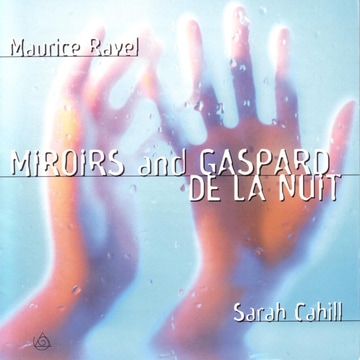|
“Miroirs and Gaspard de La Nuit’
Sarah Cahill, piano The name Maurice Ravel, for many of us, conjures up elegance and refinement, a faint perfume of decadence, and decorous tributes to a bygone era. His Impressionist label elicits dreamy visions of fountains and dappled light. In the half century of musical exploration since his death we seem to have forgotten Ravel's stature as an intrepid experimentalist -- and nowhere was he more experimental than in Miroirs and Gaspard de la Nuit. One can see, looking backward through time, that many of the ideas audiences found so provocative in the works of Olivier Messiaen and Morton Feldman were first imagined by Maurice Ravel. Ravel was thirty when he introduced Miroirs to the Apaches, a group of avant-garde painters, writers and musicians who shared their creations at regular meetings. The composer explained that this set "marks a change in my harmonic evolution considerable enough to disconcert the musicians who have been most accustomed to my style until now." In these five pieces, Ravel placed himself in the objectifying role of the mirror and reflected his subjects obliquely. Each piece is dedicated to one of the Apaches: Night Moths to Leon-Paul Fargue; Sad Birds to the Catalan virtuoso Ricardo Viñes ("because it was fun to dedicate to a pianist a piece that was not in the least pianistic"); Aubade of the Jester, with its evocation of castanets and guitars, to M.D. Calvocoressi; A Boat on the Ocean to Paul Sordes; and Valley of Bells to Maurice Delage. Viñes premiered the set in January, 1906 to a bewildered audience. On September 25, 1896 Ricardo Viñes, the pianist who would premiere Miroirs and Gaspard de la Nuit as well as others of Ravel's works, wrote in his diary: "Ravel stayed till eleven in the evening. We read ... Bertrands' Gaspard de la Nuit, which I let him take away." Ravel evidently liked the poems, because Viñes' diary entry for December 19, 1897 reads: "I asked him to give me back Gaspard de la Nuit and he said he would bring it around to my flat tomorrow because it was at the bottom of a trunk." Eleven years later Ravel composed his masterpiece evoking the dark visions of three phantasmagorical poems. The texts by Aloysius Bertrand (1807-1841), a supernatural poet esteemed by Baudelaire and Mallarmé, demonstrate a fantastic and macabre imagination akin to Edgar Allen Poe, whom Ravel also admired. The siren-song of the Ondine water-nymph tries to lure the poet to her palace at the bottom of a lake; in Le Gibet we hear the slow sway of a corpse hanging on a gallows, as well as a tolling (B-flat) bell described by pianist/critic Charles Rosen as "an assault on the nerves of the listener, a creation of tension through insistence, like the Chinese water torture." The demonic gnome in Scarbo terrorizes the poet with his transmogrifications, changing shape, looming large, and suddenly vanishing. French musicologists noted that with Gaspard de la Nuit Ravel's style had switched "from White Magic to Black Magic." --Sarah Cahill Available here: iTunes |
New Albion Records, Inc.Archives
October 2010
|

